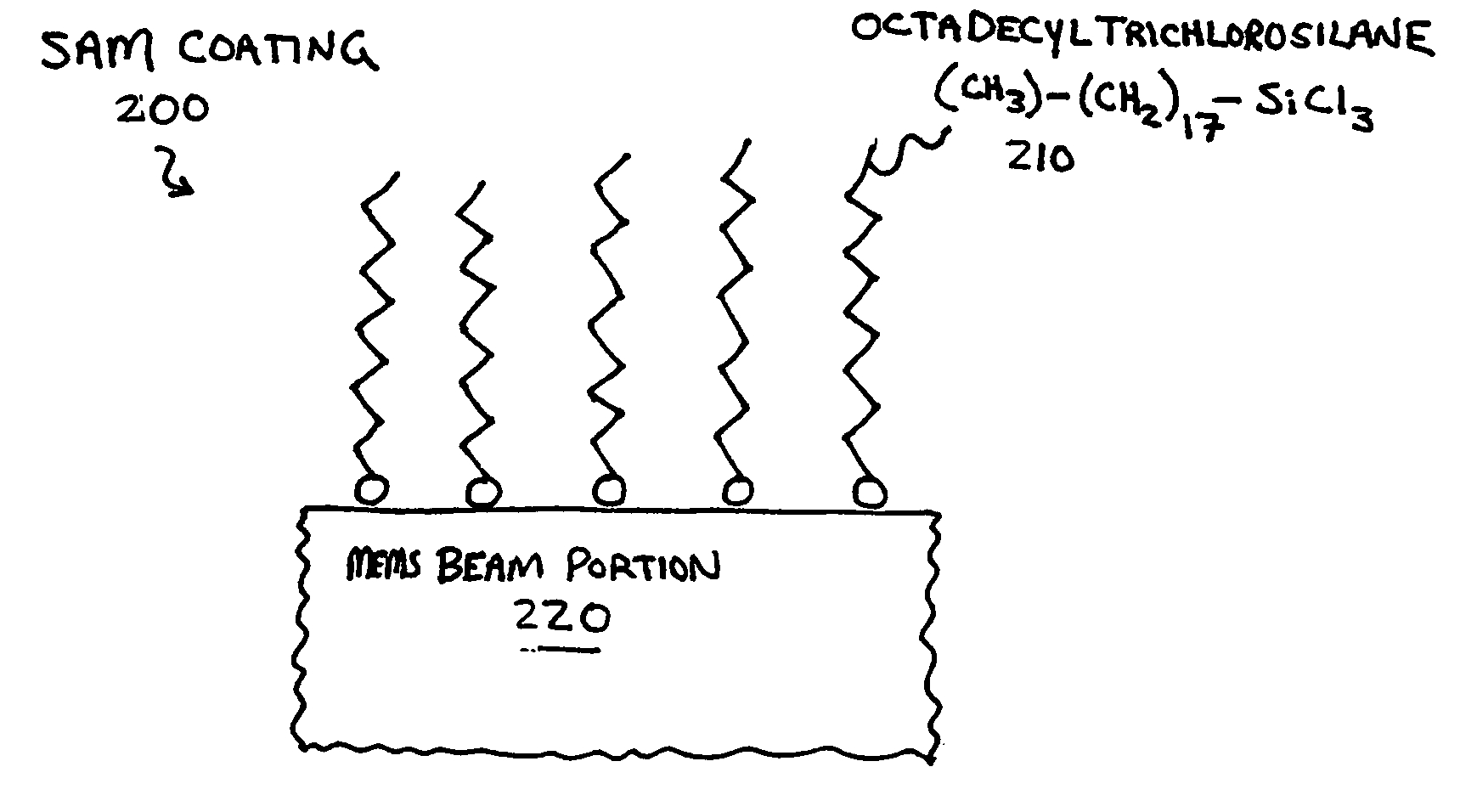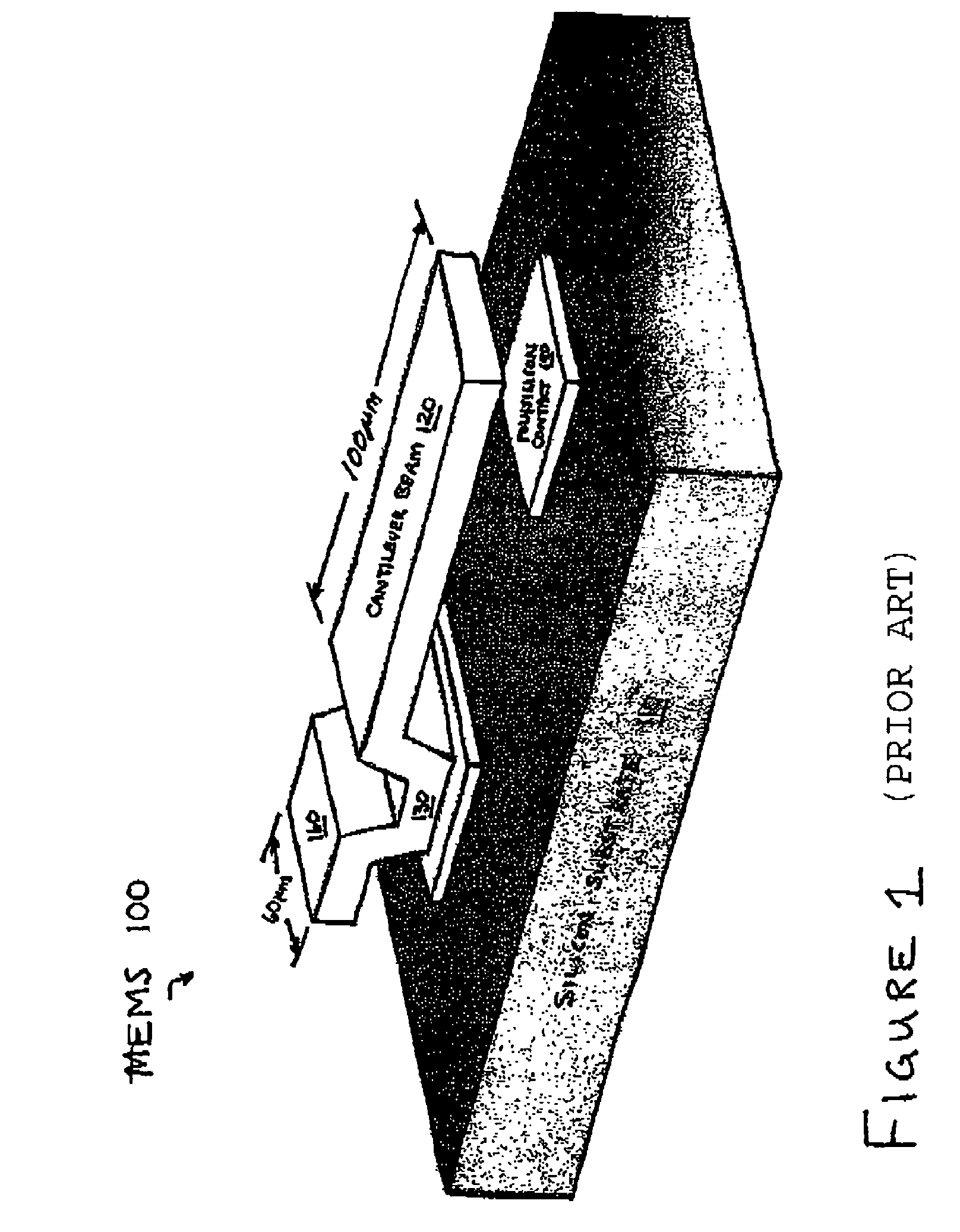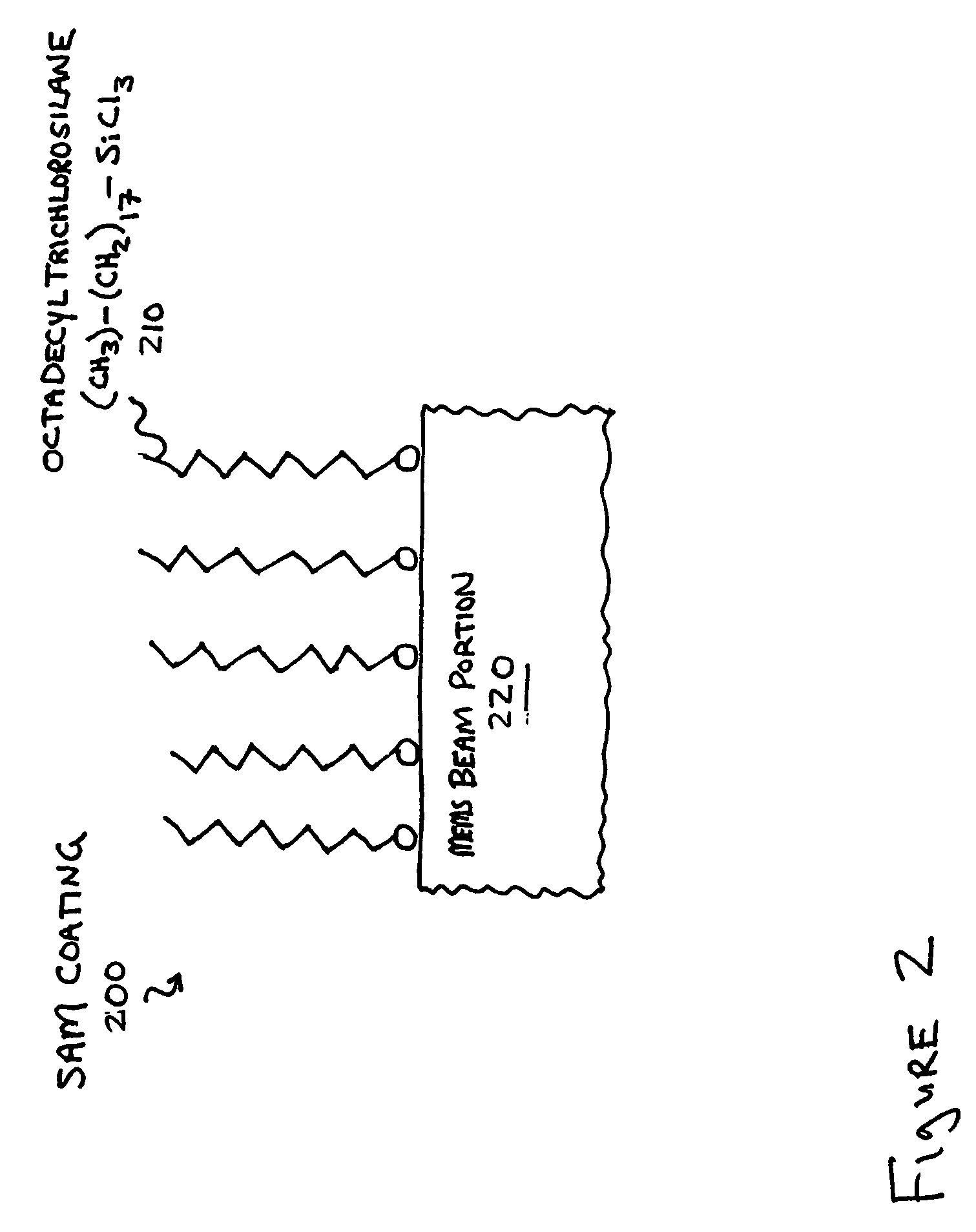Al2O3 atomic layer deposition to enhance the deposition of hydrophobic or hydrophilic coatings on micro-electromechanical devices
a micro-electromechanical device and hydrophilic coating technology, applied in the field of micro-electromechanical devices, can solve the problems of deformation of silicon, deformation of atomic layer, and significant wear of silicon during the operation achieve the effects of improving the performance of the mems device, and improving the performance of the mems
- Summary
- Abstract
- Description
- Claims
- Application Information
AI Technical Summary
Problems solved by technology
Method used
Image
Examples
example 1
Depositing a Frictional Wear Reducing Layer on a Micro-Mechanical Device
[0095]ALD may be used to deposit materials suitable to reduce frictional wear on micro-mechanical devices. This may be achieved by depositing a layer comprising a material having a hardness, wear-resistance, coefficient of friction, or other material characteristic more favorable than that of at least a portion of the device to protect moving parts from frictional wear and increase the life of the device. For example, the device may comprise a first silicon portion having a hardness of about 10-12 GPa (about 7 on the Mohs hardness scale) to contact a second silicon portion having a similar hardness and the deposited layer may comprise a material sufficiently harder than silicon deposited on the first portion and the second portion. Advantageously, the layer may contact on behalf of the first portion and the second portion and may reduce wear due to the greater hardness. For example, the material deposited may co...
example 2
Depositing an Electrically Insulating Layer on a Micro-Electromechanical Device
[0096]ALD may be used to deposit materials suitable to reduce electrical shorting in micro-electromechanical devices. This may be achieved by depositing a layer that comprises a material or materials that have sufficient electrical properties to prevent electrical shorting between proximate electrical components or between proximate devices. This may be done by depositing a material that is sufficiently dielectric (i.e., provides sufficient electrical insulation) or that has a sufficient electrical resistance to prevent electrical shorting.
[0097]Consider a micro-mechanical device that has a first silicon portion to contact a second proximate silicon portion. Silicon has particular electrical properties including a dielectric constant of about 11-12 and an electrical resistance of about 1 Ohm*cm for doped silicon. Such electrical properties may lead to an electrical shorting tendency that may be reduced by...
example 3
Exemplary Device having a Wear Reducing and Electrically Insulating Layer
[0098]FIG. 13 shows a side view of a cantilever MEMS 1300 having a layer of Al2O3 deposited thereon by ALD. According to one embodiment, the layer may be deposited by the method of FIG. 11. Advantageously, the layer of Al2O3 may be sufficiently hard to reduce frictional wear to the MEMS 1300 and sufficiently dielectric to reduce electrical shorting to the MEMS 1300.
[0099]The device 1300 includes a cantilever beam 1320 having a bottom surface 1321 and enclosing a void 1370, a first polysilicon contact plate 1340, an anchor 1330 to fixedly attach the beam 1320 to the plate 1340, a second polysilicon contact plate 1340, a silicon substrate 1310 fixedly attached with the first plate 1340 and the second plate 1350, and a layer of Al2O3 1390 deposited conformally and in substantially uniform thickness to an exposed outer surface of the device 1300 including the bottom surface 1321 and a housing of the void 1370. Adva...
PUM
| Property | Measurement | Unit |
|---|---|---|
| width | aaaaa | aaaaa |
| length | aaaaa | aaaaa |
| temperature | aaaaa | aaaaa |
Abstract
Description
Claims
Application Information
 Login to View More
Login to View More - R&D
- Intellectual Property
- Life Sciences
- Materials
- Tech Scout
- Unparalleled Data Quality
- Higher Quality Content
- 60% Fewer Hallucinations
Browse by: Latest US Patents, China's latest patents, Technical Efficacy Thesaurus, Application Domain, Technology Topic, Popular Technical Reports.
© 2025 PatSnap. All rights reserved.Legal|Privacy policy|Modern Slavery Act Transparency Statement|Sitemap|About US| Contact US: help@patsnap.com



